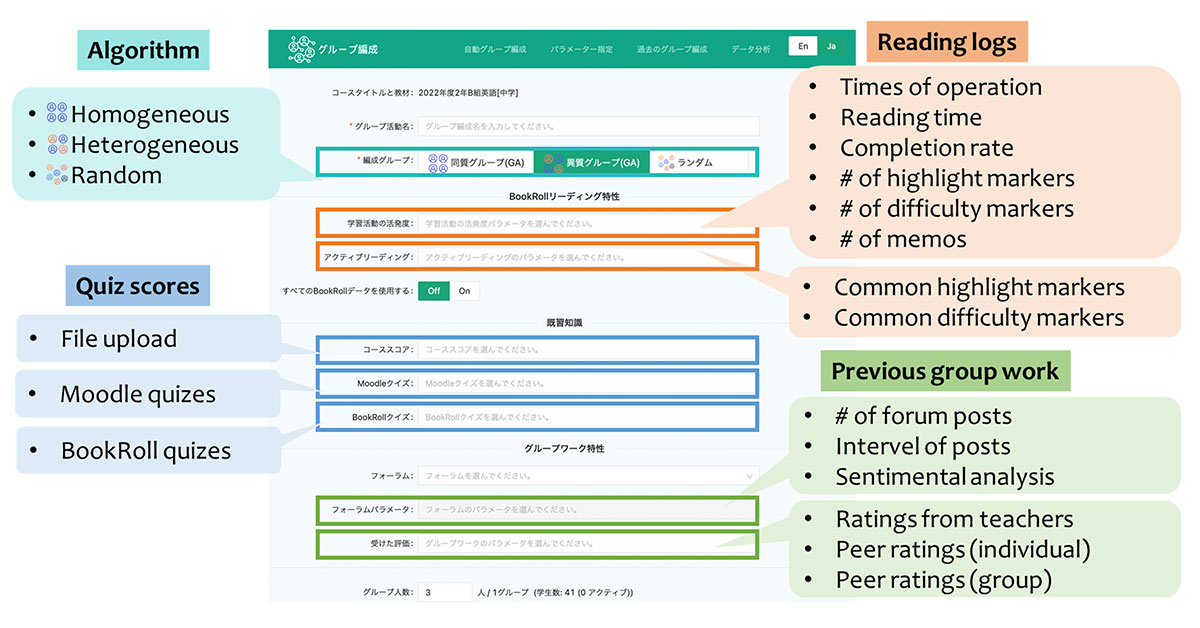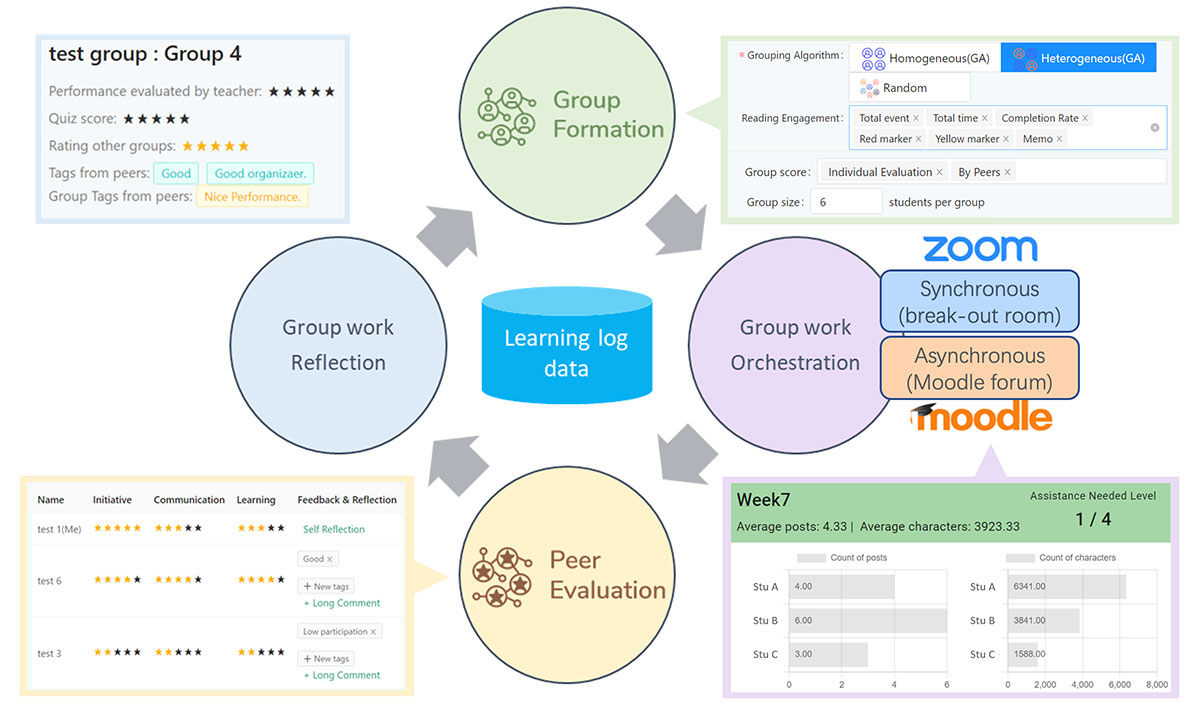- The LEAF System
What is the LEAF System?
- BookRoll
BookRoll: Digital Teaching Material Distribution System
- LogPalette
LogPalette: Learning Record Analysis Tool
- Jp
What is LogPalette?


The Group Formation Function assembles groups,
using learner attributes from learning logs to create groups.
Using learning logs makes it possible to automatically group students based on their previous learning experiences.
The characteristics of learners that can be used for grouping include their reading logs from learning materials (e.g. the number of interactions, browsing time, completion rate, markers used, and number of notes), past group work activities (e.g. frequency of participation, time intervals between contributions, sentiment analysis results, evaluations by teachers, and peer evaluations), and their prior knowledge (e.g. quiz scores).

For successful collaborative learning, group formation is the fundamental component that determines the quality of group work.
Currently, preparing for group formation based on learning required prior preparation such as conducting quizzes and collecting data, which was time-consuming. The group formation system can automatically create groups using everyday learning logs, reducing the barriers to incorporating it into regular classes.
Based on authentic classroom implementations of the group formation system, teachers have provided feedback such as “the group formation process, which used to take 1 to 1.5 hours, has been shortened to about 30 minutes” and “unconventional combinations are found in the system-recommended groups”.
Use of multiple data sources such as daily e-book reading behaviors in group formation, addressing the limitations of traditional group formation based solely on scores.

The system can support three types of group formation strategies: homogeneous groups, where members with similar characteristics are grouped together; heterogeneous groups, where members with diverse characteristics are grouped together; and random groups.
Depending on different learning contexts and purposes, it is possible to select an appropriate group formation strategy.

When the teachers give evaluations, the learners’ names are presented with a colored background representing their past group learning performance. This gives reference to the teacher on at-risk students for intervention. By reflecting on previous group work, teachers can acquire valuable insights, which can be leveraged for subsequent activity planning and group formation design.

Group Learning Orchestration Based on Evidence (GLOBE) is a data-driven infrastructure to support group learning with learning analytics (LA).
In GLOBE framework, there are four phases of group work: formation, orchestration, evaluation and reflection.
GLOBE framework is substantiated in several systems based on LEAF, such as the group formation system, the group discussion visualization system, and the peer evaluation system.
